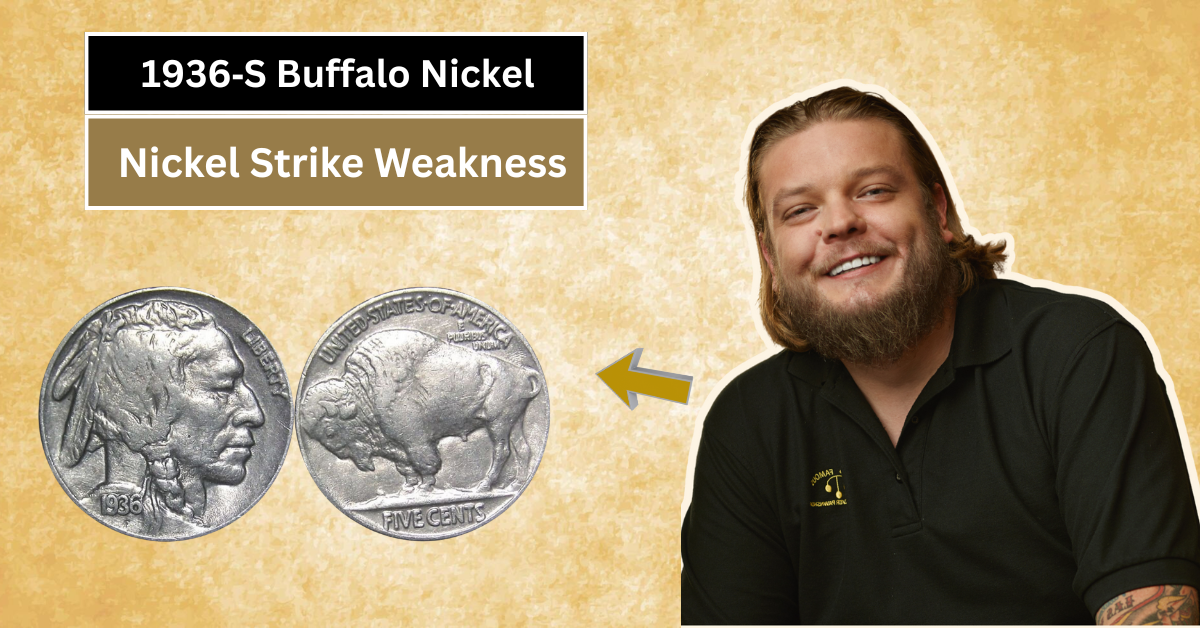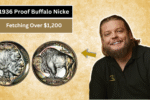The 1936-S Buffalo Nickel is one of the more interesting coins for collectors, but it also comes with some unique challenges. One major issue is the “strike weakness,” which affects the clarity of its design. This article will explain why the horn detail on the coin can appear mushy and how the coin’s shiny surface, called luster, can sometimes hide important features.
Understanding these details is important for anyone looking to buy, sell, or grade a 1936-S Buffalo Nickel. By the end of this article, you will know why the strike weakness happens, how luster plays a role, and what this means for the coin’s overall value and grade. Let’s dive into this fascinating coin and its quirks.
What Is Strike Weakness in Coins?
Strike weakness means that some parts of a coin’s design are not fully impressed during the minting process. When coins are made, blank metal pieces are pressed between two dies that have the design engraved on them. Sometimes, the pressure is not enough or the dies are worn out, which results in softer, unclear details. This is common with Buffalo Nickels because of their intricate design and the minting techniques used in the 1930s.
For the 1936-S Buffalo Nickel, strike weakness usually appears on the buffalo’s horn and other small details. Instead of sharp, clear lines, the horn looks mushy or smooth, making it hard to see the exact shape. This can confuse coin graders and collectors because detail is a key factor in a coin’s grade.
How Luster Can Hide Details on the 1936-S Buffalo Nickel
Luster is the shiny finish on a coin’s surface caused by the way light reflects off tiny metal flow marks during striking. Ideally, a good luster enhances the coin’s appearance and makes details stand out. However, on the 1936-S Buffalo Nickel, the coin’s natural luster can sometimes make the mushy horn detail even harder to see. This happens because the bright shine creates reflections that obscure the weak design elements underneath.
When luster hides the horn detail, it becomes difficult to assess the coin accurately. A person grading the coin might think the horn is sharper or better made than it really is. This can lead to confusion about the coin’s quality and grade, especially for collectors who do not have expert knowledge or special lighting tools.
Why Mushy Horn Detail Matters for Coin Grading
Coin grading depends heavily on how sharp and clear the coin’s design is. Every small detail gives clues about how well the coin was made and preserved. For the Buffalo Nickel, the horns are an important part of the design. When the horns are mushy or unclear, it signals a weaker strike or wear, even if the coin looks shiny and new on the surface.
This means a 1936-S Buffalo Nickel with mushy horn detail might receive a lower grade than a coin with fully sharp details. Grading companies like PCGS and NGC pay close attention to these weak areas. So, understanding this flaw helps collectors avoid overpaying for coins that seem nice but have hidden weaknesses.
How to Identify Strike Weakness and Luster Effects at Home
If you are a new collector or just curious, there are simple ways to spot strike weakness and the impact of luster. Use a bright LED light and hold the coin at different angles. Look closely at the buffalo’s horns. If the lines look soft, blurred, or missing, it is likely strike weakness.
Also, gently tilt the coin to see how the shiny surface reflects light. Notice if the luster creates bright spots that hide details. If so, try to view the coin in softer light. Taking photos or videos can help you compare these views and better understand what you are seeing on the coin’s surface.
What This Means for Buyers and Sellers in India and Beyond
For collectors in India and other countries, knowing about the 1936-S Buffalo Nickel’s strike weakness can save money and prevent mistakes. If you plan to buy this coin, ask for close-up pictures focusing on the horn area. If possible, inspect the coin in person or ask a trusted expert for advice.
Sellers should be honest about the strike weakness and luster effects when listing the coin. Clear photos and descriptions help build trust and avoid disputes later. Being informed allows both buyers and sellers to understand the true value of the coin and set realistic prices in the market.
Conclusion: Understanding the Strike Weakness Improves Your Collection
The 1936-S Buffalo Nickel is a beautiful but tricky coin to grade and value because of its strike weakness, especially in the horn area. Luster, while usually a positive feature, can sometimes hide these mushy details and confuse collectors.
By learning to recognize strike weakness and the effects of luster, you can become a smarter collector or seller. This knowledge will help you appreciate the coin’s true condition and avoid costly mistakes. Whether you are new to coin collecting or a seasoned expert, understanding these details will improve your experience with the fascinating 1936-S Buffalo Nickel.



